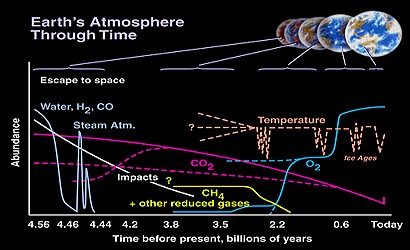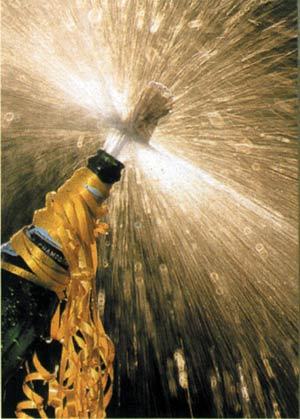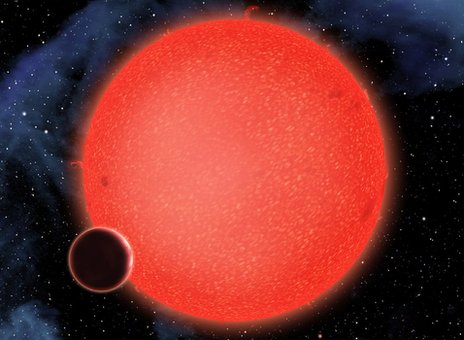It looks like you're using an Ad Blocker.
Please white-list or disable AboveTopSecret.com in your ad-blocking tool.
Thank you.
Some features of ATS will be disabled while you continue to use an ad-blocker.
share:
reply to post by H1ght3chHippie
Here you go, use it to educate yourself..... www.eso.org...
Nice post OP, GJ 1214 b is a fascinating world. The James webb space telescope will be able to tell us a lot more about it 'it's one of the first things they plan to use it for'...
Nice post OP, GJ 1214 b is a fascinating world. The James webb space telescope will be able to tell us a lot more about it 'it's one of the first things they plan to use it for'...
Is this part of disclosure.
First they announced they found earth sized planets.
Then they announced they found earth like planets.
Now they announced earth like planets with water.
All that's left is to announce they found earth like planets with life. Followed by intelligant life, Then contact, Then visitation.
This must be for the programmed dunces that make up the majority of the American population.
Mean while they are already here and are being witnessed and reported by hundreds of thousands of people around the globe.
Then the dunces will realize all those reported ufos were real, not taking into account that that will mean the government has been lying to them for decades.
First they announced they found earth sized planets.
Then they announced they found earth like planets.
Now they announced earth like planets with water.
All that's left is to announce they found earth like planets with life. Followed by intelligant life, Then contact, Then visitation.
This must be for the programmed dunces that make up the majority of the American population.
Mean while they are already here and are being witnessed and reported by hundreds of thousands of people around the globe.
Then the dunces will realize all those reported ufos were real, not taking into account that that will mean the government has been lying to them for decades.
reply to post by gortex
I did use spectrometers and refractometers many times myself under laboratory conditions when working as chemistry technician as well as during my 3 semesters studying BoS Chemistry / Biotechnology, so I am aware of the basic principles. And I'm also aware about the careful preparations you need to make in order to get an accurate measurement, that includes calibrating your own equipment with *known* substances as well as meeting very specific temperature and concentration requirements for the sample itself.
So now explain this to me ... since no man has ever gone to one of these distant planets that were analysed spectroscopically, brought back a sample and analysed it in order to see if the instruments were right, what proof in scientific terms do they have that their readings are correct ? None whatsoever, it's all speculation until someone can do a detailed analysis here on earth with a proven method.
I did use spectrometers and refractometers many times myself under laboratory conditions when working as chemistry technician as well as during my 3 semesters studying BoS Chemistry / Biotechnology, so I am aware of the basic principles. And I'm also aware about the careful preparations you need to make in order to get an accurate measurement, that includes calibrating your own equipment with *known* substances as well as meeting very specific temperature and concentration requirements for the sample itself.
So now explain this to me ... since no man has ever gone to one of these distant planets that were analysed spectroscopically, brought back a sample and analysed it in order to see if the instruments were right, what proof in scientific terms do they have that their readings are correct ? None whatsoever, it's all speculation until someone can do a detailed analysis here on earth with a proven method.
Think of the Inner Zone orbits as those planetary orbits closer to the Star than its Habitable Zone. So you have the Inner Zone, the Habitable Zone
and the Outer Zone. Planets orbiting in the inner half of the Inner Zone have Torch Orbits.
reply to post by H1ght3chHippie
I am sure the instrument was calibrated by known materials from Earth and/or celestial objects with known composition. Your skepticism is unwarranted.
since no man has ever gone to one of these distant planets that were analysed spectroscopically, brought back a sample and analysed it in order to see if the instruments were right, what proof in scientific terms do they have that their readings are correct ?
I am sure the instrument was calibrated by known materials from Earth and/or celestial objects with known composition. Your skepticism is unwarranted.
reply to post by Maslo
Even the article states this
I believe your argument is invalid... Skepticism is Warranted.
Even the article states this
"The high temperatures and pressures would form exotic materials like 'hot ice' or 'superfluid water', substances that are completely alien to our everyday experience," said Dr Berta.
I believe your argument is invalid... Skepticism is Warranted.
Originally posted by -W1LL
reply to post by Maslo
Even the article states this
"The high temperatures and pressures would form exotic materials like 'hot ice' or 'superfluid water', substances that are completely alien to our everyday experience," said Dr Berta.
I believe your argument is invalid... Skepticism is Warranted.
This refers to materials that may be present deep under the planet surface. What was actually measured is an atmosphere composed of good old water vapour, not exotic materials.
edit on 22/2/12 by Maslo because: (no reason given)
It's becoming obvious that there are exoplanets that have or can have liquid water on them.
The next big step is to analyze the makeup of their atmospheres using spectral analysis.
High levels of oxygen would be a good indicator of photosynthetic life (plants, cyanobacteria). Oxygen is highly reactive and would not occur naturally at high levels:
science.nasa.gov...
The gases NASA is looking for to indicate life are:
They will also take into account what gases could be present given the planet's evolution using Earth as a model (e.g. life before photosynthesis evolved):

The next big step is to analyze the makeup of their atmospheres using spectral analysis.
High levels of oxygen would be a good indicator of photosynthetic life (plants, cyanobacteria). Oxygen is highly reactive and would not occur naturally at high levels:
Without life, oxygen should be rare on rocky worlds. A small amount of it can be created without life by ultraviolet radiation that splits water vapor into hydrogen and oxygen. But that oxygen would be readily consumed by rocks and minerals on the planet's surface in the "oxidizing" reactions that produce, for example, rust. Volcanic gases also react with oxygen and remove it from the atmosphere. Geological processes alone usually work against the accumulation of oxygen.
An oxygen-rich atmosphere is, therefore, out of chemical equilibrium, suggesting that some active agent -- namely photosynthetic life -- is constantly replenishing the supply.
science.nasa.gov...
The gases NASA is looking for to indicate life are:
For this and other reasons, the exploration of distant Earth-like planets with TPF will focus on simple gases such as oxygen, ozone, carbon dioxide, methane, and, of course, water vapor.
They will also take into account what gases could be present given the planet's evolution using Earth as a model (e.g. life before photosynthesis evolved):

There has actually been speculation on this planet for a while,astral travellers who have visited the place have named it "Zanto".
I get very sinister vibes from this place,yes some places are best left to be.Spinning in the endless tamoska of time..
I get very sinister vibes from this place,yes some places are best left to be.Spinning in the endless tamoska of time..
edit on 22-2-2012 by
paperface because: (no reason given)
I call dibs on naming it!
I think it looks like a Cindy so I'll name it Jeronamo.
I think it looks like a Cindy so I'll name it Jeronamo.
Originally posted by Kyprian
Very cool...does it come with its own Costner?
Has Dry Land and everything.
haha beat me to it
Originally posted by H1ght3chHippie
They can't even tell for sure yet if there's water on our own moon but they tell us exactly how much water is on a planet 40 light years away, and even how warm it is.
Who are they kidding.edit on 21-2-2012 by H1ght3chHippie because: (no reason given)
I always wondered how they can be so certain of these planets so mind boggling distant when they can't even work out planets in our our solar system.
It's all guess work and I would expect eventually it'll all be proven wrong.
Originally posted by ValisInUnderland
nibiru with it's gold infused atmosphere.
the most riduculous thing ive ever heard. good thing its not niburu.
So...how much longer do we have to wait until someone develops the warp drive and we make first contact with the Vulcans? I wanna get to exploring
some of these planets.
Originally posted by gortex
Astronomers have confirmed the discovery of what they term as a new Class of planet , otherwise known as GJ 1214b .
The planet is a Super Earth about 2.7 times the the size of Earth with temps estimated at around 200c with a thick, steamy atmosphere , It orbits a red-dwarf star
The Planet is located just 40 light-years from Earth .
GJ 1214b orbits close to its host star, as this artist's impression shows
The planet's high temperatures suggest exotic materials might exist there.
"GJ 1214b is like no planet we know of," said lead author Zachory Berta, from the Harvard Smithsonian Center for Astrophysics.
"The high temperatures and pressures would form exotic materials like 'hot ice' or 'superfluid water', substances that are completely alien to our everyday experience," said Dr Berta.
Calculations of the planet's density also suggest that GJ 1214b has more water than Earth. This means the internal structure of this world would be very different to that of our own.
www.bbc.co.uk...
I love the thought of Hot Ice , wonder if that translates to snow too , I love snow but I've always found it too cold , maybe in this case snow would be too hot
edit on 21-2-2012 by gortex because: Edit to add
Wow, Astronomy sure is coming a long way. I don't however believe that they know exactly what these planets consist of. It could be water but for them to say it's 100% true is just over guessing IMO.
Its "just" 40 light years away. Makes me laugh how we can determine this from this huge distance but we cannot take decent photographs of our moon
which is a stones throw in comparison.
reply to post by Mister_Bit
They are measuring the spectral signatures in the atmospheres, the moon doesn't have an atmosphere. The signatures are a large percentage of the reflected light, water under the surface of the moon is measured in parts per billion.
But just laugh at the science, its a reflection of your understanding.
Apples and oranges, or did you expect Gutenberg to also develop penicillin? All you have to do to get better pictures of the moon is to build a bigger lens assembly, and launch it into space.
They are measuring the spectral signatures in the atmospheres, the moon doesn't have an atmosphere. The signatures are a large percentage of the reflected light, water under the surface of the moon is measured in parts per billion.
But just laugh at the science, its a reflection of your understanding.
Its "just" 40 light years away. Makes me laugh how we can determine this from this huge distance but we cannot take decent photographs of our moon which is a stones throw in comparison.
Apples and oranges, or did you expect Gutenberg to also develop penicillin? All you have to do to get better pictures of the moon is to build a bigger lens assembly, and launch it into space.
edit on 22-2-2012 by Illustronic because: (no reason given)
Phil Plait has an interesting, and humorous take on this on his Bad-Astronomy blog.
blogs.discovermagazine.com...
So by breaking the light up into lots of colors and carefully measuring it, it’s possible to figure out what’s in the planet’s atmosphere. Earlier observations could tell that something was absorbing starlight, but they couldn’t tell what. New Hubble observations (PDF) indicate that the best fit to the observations is: water. Haze, for example, absorbs more visible light than infrared, but that’s not what was seen. The spectrum matches the way water absorbs light best, and in fact indicates the atmosphere may be as much as 50% water by mass! Given the planet’s size of about 35,000 km (22,000 miles), its density is quite low: about 2 grams per cubic centimeter. Compare that to Earth’s density of 5.5 grams per cc! A rocky world more massive than Earth would most likely be denser than 2 grams/cc, so that’s consistent with this planet having lots of water (which has a density of 1 gram/cc). The scientists involved indicate this planet would be really weird. There may be exotic forms of water there, due to the high temperatures and pressure deep in the planet’s atmosphere. Most likely the planet formed farther out from the star and migrated inward, a phenomenon that is apparently very common in planetary systems. I’ll note other planets like this have been found, too, but not with such a high-precision spectrum and therefore such certainty. I know that our solar system is pretty weird; we have all manners of strange things floating around in it. But there’s nothing like seeing something so weird it makes us look positively normal by comparison. Sometimes we really do need a swift kick in the planets.
blogs.discovermagazine.com...
new topics
-
So I saw about 30 UFOs in formation last night.
Aliens and UFOs: 32 minutes ago -
Do we live in a simulation similar to The Matrix 1999?
ATS Skunk Works: 1 hours ago -
BREAKING: O’Keefe Media Uncovers who is really running the White House
US Political Madness: 1 hours ago -
Biden--My Uncle Was Eaten By Cannibals
US Political Madness: 2 hours ago -
"We're All Hamas" Heard at Columbia University Protests
Social Issues and Civil Unrest: 2 hours ago -
The good, the Bad and the Ugly!
Diseases and Pandemics: 4 hours ago -
Russian intelligence officer: explosions at defense factories in the USA and Wales may be sabotage
Weaponry: 7 hours ago -
African "Newcomers" Tell NYC They Don't Like the Free Food or Shelter They've Been Given
Social Issues and Civil Unrest: 8 hours ago -
Russia Flooding
Fragile Earth: 9 hours ago -
MULTIPLE SKYMASTER MESSAGES GOING OUT
World War Three: 10 hours ago
top topics
-
Go Woke, Go Broke--Forbes Confirms Disney Has Lost Money On Star Wars
Movies: 17 hours ago, 13 flags -
Biden--My Uncle Was Eaten By Cannibals
US Political Madness: 2 hours ago, 13 flags -
BREAKING: O’Keefe Media Uncovers who is really running the White House
US Political Madness: 1 hours ago, 13 flags -
Pro Hamas protesters at Columbia claim hit with chemical spray
World War Three: 13 hours ago, 11 flags -
Elites disapearing
Political Conspiracies: 15 hours ago, 11 flags -
African "Newcomers" Tell NYC They Don't Like the Free Food or Shelter They've Been Given
Social Issues and Civil Unrest: 8 hours ago, 10 flags -
Two Serious Crimes Committed by President JOE BIDEN that are Easy to Impeach Him For.
US Political Madness: 10 hours ago, 7 flags -
911 emergency lines are DOWN across multiple states
Breaking Alternative News: 10 hours ago, 6 flags -
A Personal Cigar UFO/UAP Video footage I have held onto and will release it here and now.
Aliens and UFOs: 15 hours ago, 5 flags -
Russian intelligence officer: explosions at defense factories in the USA and Wales may be sabotage
Weaponry: 7 hours ago, 4 flags
active topics
-
"We're All Hamas" Heard at Columbia University Protests
Social Issues and Civil Unrest • 28 • : FlyersFan -
Hello from the Northern East Coast
Introductions • 14 • : CCoburn -
Russian intelligence officer: explosions at defense factories in the USA and Wales may be sabotage
Weaponry • 147 • : Kurokage -
Reason of the Existence
The Gray Area • 19 • : CCoburn -
Marjorie Taylor Greene Files Motion to Vacate Speaker Mike Johnson
US Political Madness • 60 • : interupt42 -
Candidate TRUMP Now Has Crazy Judge JUAN MERCHAN After Him - The Stormy Daniels Hush-Money Case.
Political Conspiracies • 322 • : Threadbarer -
MULTIPLE SKYMASTER MESSAGES GOING OUT
World War Three • 16 • : JimmyNeutr0n -
What do you do to get to sleep and stay asleep ??
Health & Wellness • 107 • : FlyersFan -
Abortions in first 12 weeks should be legalised in Germany, commission says
Medical Issues & Conspiracies • 28 • : Sookiechacha -
It has begun... Iran begins attack on Israel, launches tons of drones towards the country
World War Three • 874 • : FlyersFan


